Planting radishes in August - when to plant and is it possible to do it?
Radishes are not light-loving crops. In bright and prolonged light, the plant shoots out an arrow, and the root crop stops growing. Experienced summer residents recommend planting radishes in mid-spring, when the sun is not shining so brightly and the earth is not completely warmed up. Planting radishes in August, when the temperature drops and daylight hours are shortened, will also give excellent results.
Is it possible to plant radishes in August?
Many gardeners are accustomed to growing radishes in early spring, not knowing that the autumn harvest is richer, and the taste of the root crop is more intense. Therefore, planting radishes in August is not only possible, but also necessary.
Reference. The root crop is not afraid of low temperatures and can easily withstand down to -2°C. The cold preserves the freshness and taste of the crop for a long time, and pests are less active at this time.
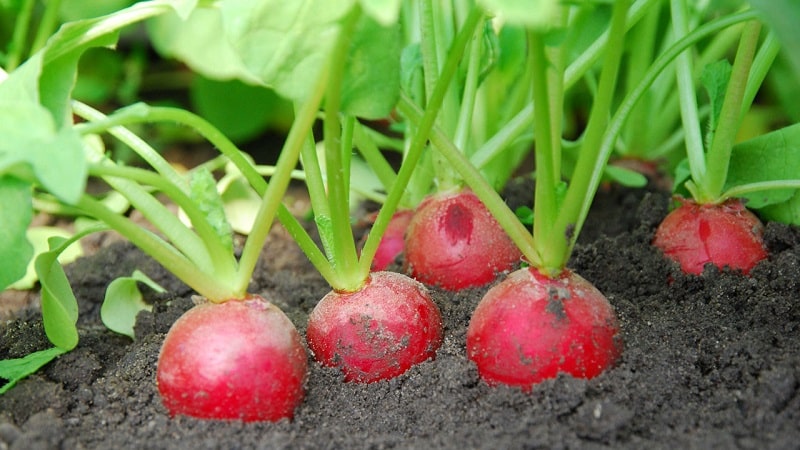
When can you plant radishes in August?
The period from July to October is suitable for replanting radishes.. The best time is the second half of August, when the air temperature begins to drop. In such weather, radishes feel most comfortable and delight with a juicy and crunchy root vegetable.
It can be useful:
The best varieties for planting in August
A large selection of varieties allows you to grow radishes throughout the summer. Which radish to plant in August is up to you. There are different options, for example, large-fruited, round, oblong, etc.
Seeds of varieties Lanket, Red Giant, Ice Icicle are planted at the beginning of the month. In warm weather, the plant will grow in a short time.
The following varieties of round radishes that are resistant to bolting are: suitable for planting in late summer or early September:
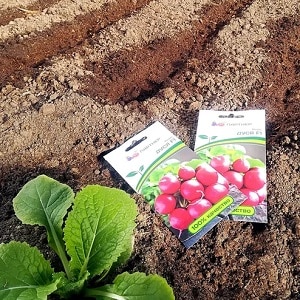 Würzburg – the length of the root crop reaches 4 cm, diameter – 3.9 cm. It has a good juicy taste without bitterness, and does not become flabby for a long time. The ripening period varies from 25 to 35 days.
Würzburg – the length of the root crop reaches 4 cm, diameter – 3.9 cm. It has a good juicy taste without bitterness, and does not become flabby for a long time. The ripening period varies from 25 to 35 days.- Askania – an early ripening variety with large root crops. Resistant to flowering, grows well in conditions of high temperatures and long daylight hours.
- Duro Suitable for planting in a greenhouse or open ground from May to mid-August. Juicy root vegetables are red in color and have very dense pulp.
Growing rules
To obtain a bountiful harvest during winter planting it is necessary to choose the right variety and provide proper care. The process of growing radishes consists of several stages: watering, loosening, fertilizing.
Soil preparation
After harvesting the early harvest, the plots in the garden are freed up; they are perfect for growing early ripening crops.
Important! Radishes grow well in beds where tomatoes, cucumbers, and legumes were grown.
After harvesting, the soil is dug up to remove plant remains and their roots.. The dug up substrate is loosened and watered abundantly using sprinkling.
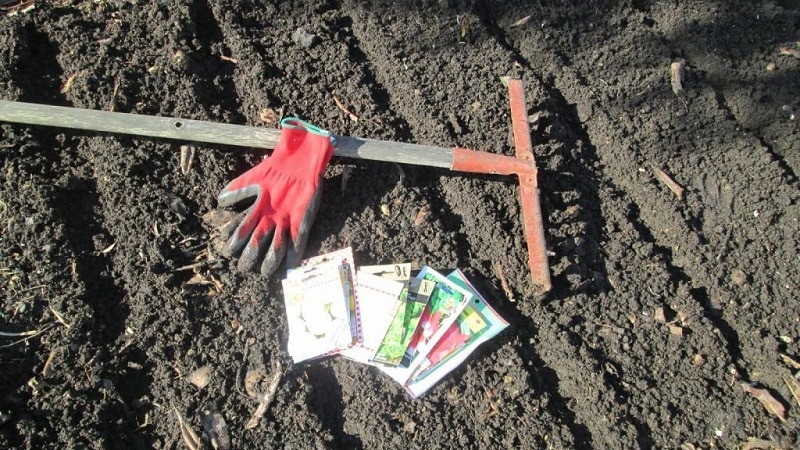
It is recommended to fertilize the soil with humus or a solution of potassium sulfate. The pH should be neutral - an acidic environment is harmful to radishes. By planting the root crop in early August, you can harvest in 20-25 days. In warm autumn, it is allowed to plant radishes in September; the plant will have time to form a root crop before the onset of cold weather.
Seed selection and preparation
Before sowing, select seeds of suitable varieties and sift them through a sieve with a mesh size of no more than 2 mm. Then planting material is soaked in a weak solution of potassium permanganate to prevent infection by parasites, or use a solution of potassium humate to improve germination.
Read also:
When to plant radishes in the summer for the second time
Planting pattern and depth
Seeds are planted in grooves 2-3 cm deep, with a dense substrate 1-1.5 cm is enough. The distance between the rows should be at least 8-10 cm, and the gap between the holes should be 3-5 cm, depending on the type of radish.
On a note. To prevent the top of the bed from becoming crusty, the furrows are sprinkled with loose soil.
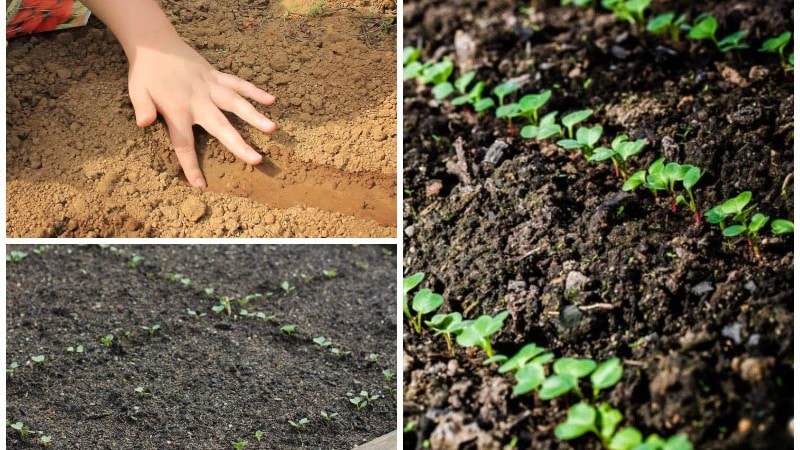
Features of care
Successful cultivation of radishes is impossible without careful care, especially before the first shoots appear. Care includes loosening, regular watering and protection from parasites and pests. In greenhouse conditions, it is necessary to create temperature and humidity conditions for comfortable growth of root crops.
A week later the first shoots begin to appear. They are still weak, they need to be protected from the sun by covering the seedlings with improvised means. Glass jars or the bottom of plastic bottles are suitable for this purpose.
Watering
Do not flood the seedlings with water; at first it is better to use a spray bottle. When the plant grows a little, it begins to be watered as the soil dries out. In hot weather it is recommended to carry out the procedure every day, in cool weather – once every 2-3 days. Proper watering is to moisten the soil to about 15 cm deep.
Important! Untimely watering makes the root crop bitter and hard.
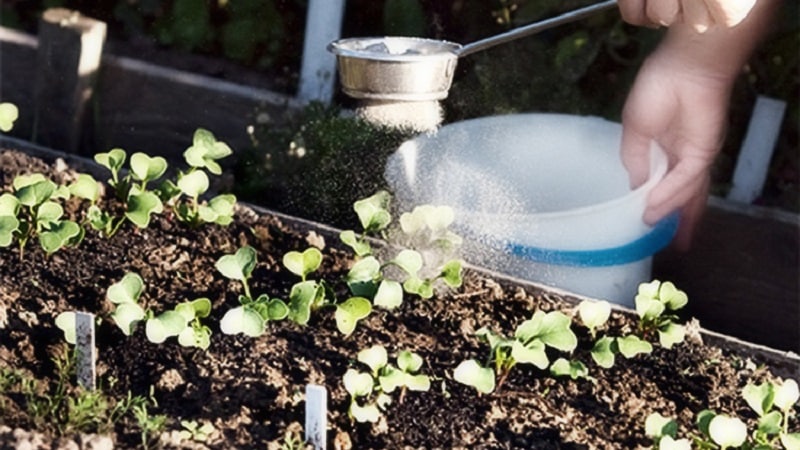
Top dressing
The soil is depleted after harvest, so fertilizing is necessary for growing radishes in August. Many people use preparations as fertilizer that can be bought in gardening stores. They enrich the soil with microelements and activate the soil microflora.
Minerals are used before sowing, placing them on the bottom of the furrow. Such a fertilizer should contain a bucket of compost, 20 g of urea and 80 g of double superphosphate.
There are also natural growth stimulants, which can become analogues of expensive ones. These fertilizers include:
- Ash. It can replace nitrogen-containing fertilizers and is used during radish planting and growth. Ash in its pure form is added to the furrow during sowing, or the leaves are sprayed with the solution to combat parasites.
- Chicken droppings. Contains nitrogen, phosphorus and potassium, but cannot be used undiluted. To prepare the fertilizer, 1 liter of litter is diluted in 3 liters of water and infused for 3 days. The resulting slurry is applied to the soil 1-2 times per season, preferably from the second week after planting.
- Yeast is an analogue of expensive growth stimulants. The solution is watered between the rows of root crops on the 10th day after planting. To do this, 100 g of yeast are diluted in 10 liters of water and left for 1 night.
Loosening the soil
Loosening carried out between rows to improve oxygen supply to the roots. However, you should not loosen deeply, so as not to pull out the fragile roots of the radish. It is better to carry out surface loosening a day after watering, when the substrate absorbs water and becomes soft.
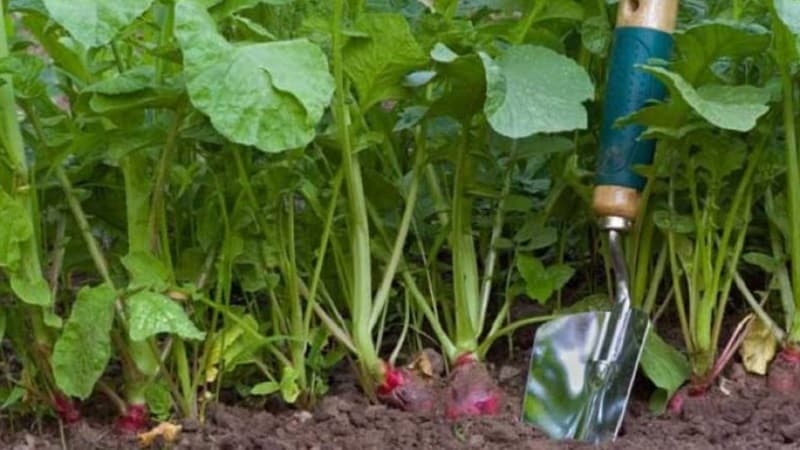
Pest control and disease protection
When growing radishes in August and September the parasites are not as active as in the spring. However, the cruciferous flea beetle can cause many problems for gardeners.To protect the crop from these insects, use a breathable shelter for young plants and open it only for watering and loosening. The cover is removed when the seedlings become stronger: hard root crops do not attract pests.
When, if the cruciferous flea beetle still damaged the young shoots, they are dealt with using mustard powder and ground pepper. To do this, scatter the burning mixture along the rows and cover it with something to create a greenhouse effect.
Important Tips
Loamy, sandy loam or peat soil is suitable for growing radishes.. The predecessors should not be plants from the cruciferous family. If the soil is depleted, add organic matter in the form of compost or humus. Moderate nitrogen fertilizing during the growing season will delay bolting and promote the formation of large root crops.
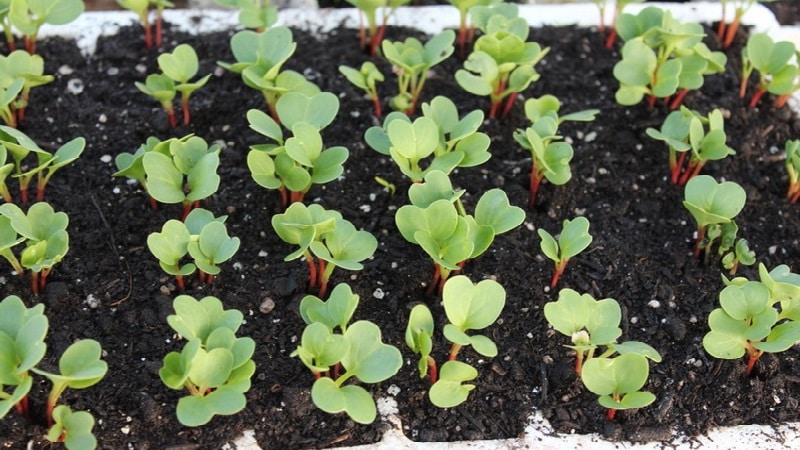
After emergence of seedlings, thinning is carried out, otherwise, instead of a rich harvest, you will get dead plants. To prevent radishes from becoming spicy, watering must be regular; in no case should the soil be allowed to dry out. In hot weather, water radishes twice a day, especially during the formation of root crops.
Harvest stored for 1 month, after which the root crop loses its taste and begins to rot.
Proper storage of crops is as follows:
- Harvesting is carried out as they ripen; if necessary, it can be postponed until the first frost.
- Root vegetables are stored in the refrigerator or in the basement, where the air temperature is not higher than +1°C.
Conclusion
Subject to standard care measures, late cultivation of radishes is possible in all climatic zones.To get a bountiful harvest at the end of summer, monitor the condition of the soil, apply a sufficient amount of organic fertilizers, choose the right variety and follow agrotechnical requirements.